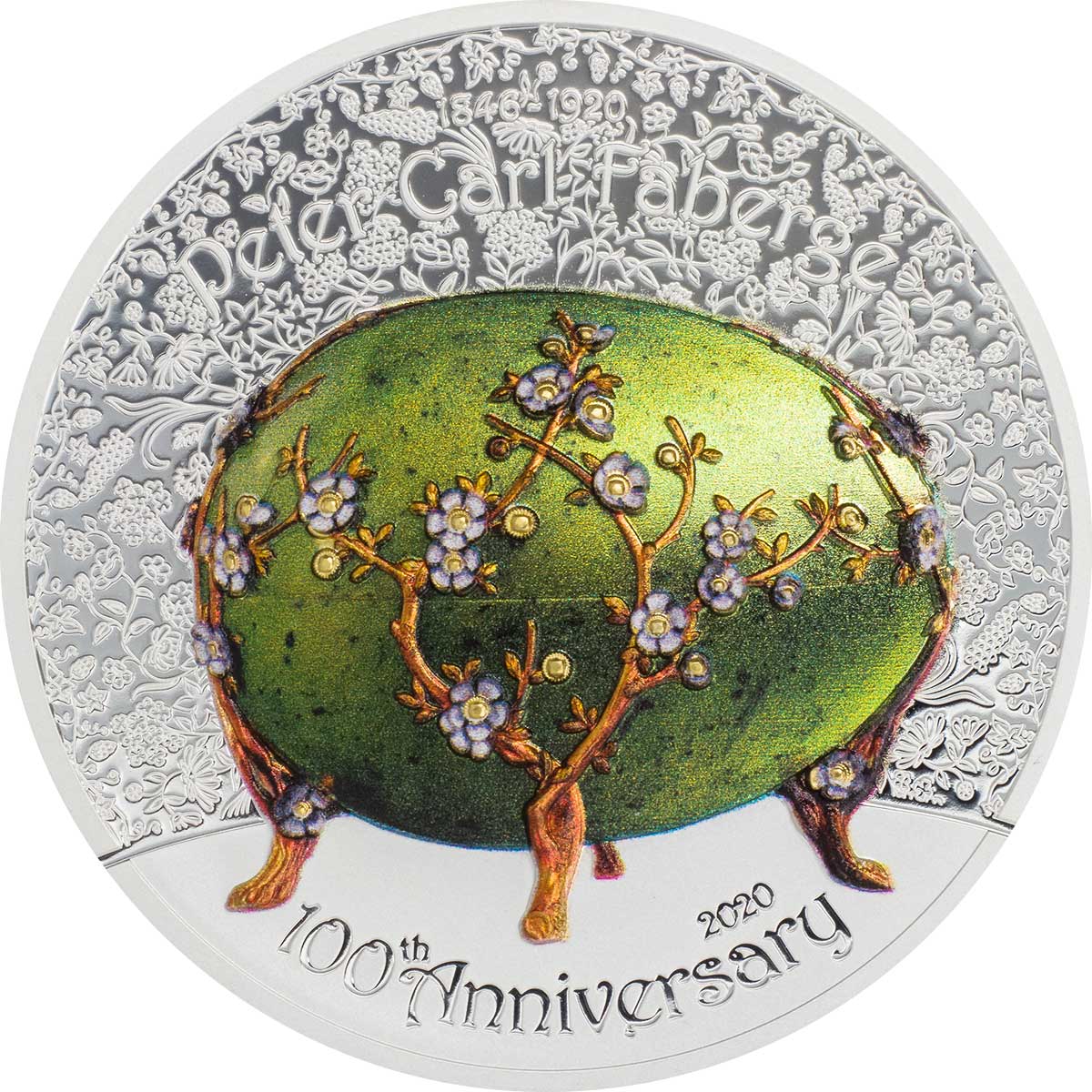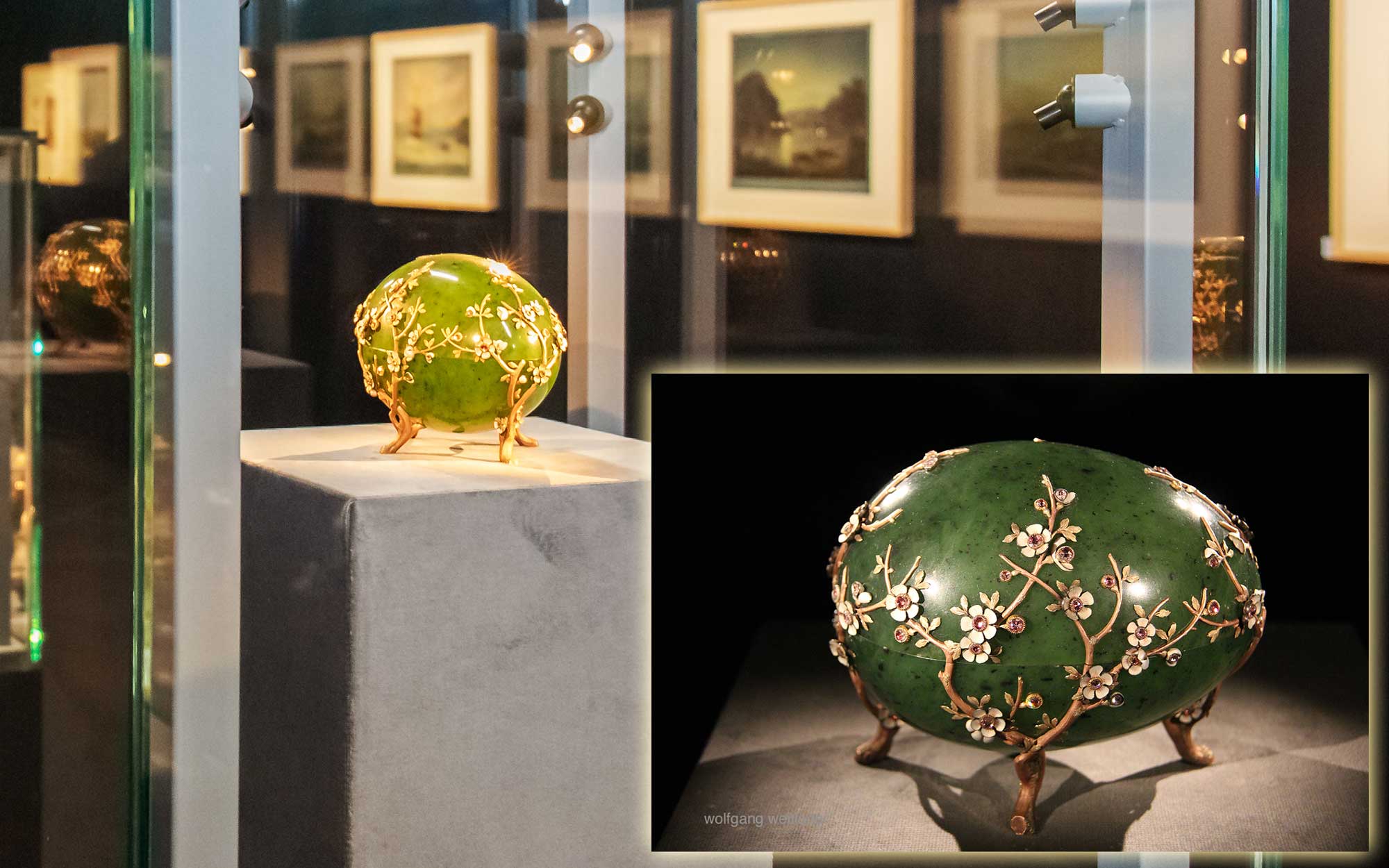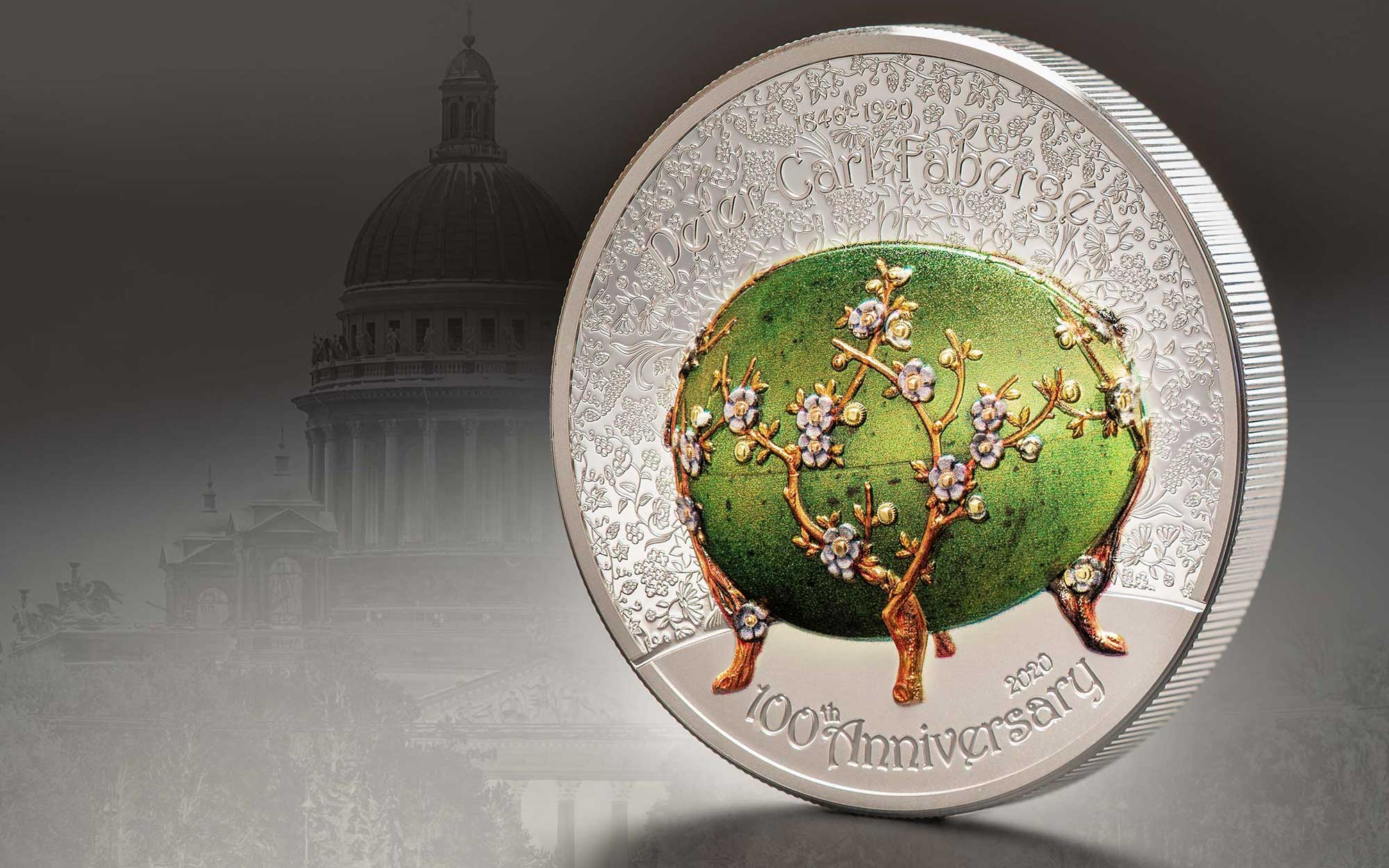A Green Egg, but no ham! Fabergé died a century ago and CIT marks the date with a new coin
One of the art worlds most iconic items, Fabergé eggs were created between 1885 and 1917 by the House of Fabergé, in St. Petersburg. The 1917 end date is no coincidence, as the end of the company was brought about by the communist revolution that upended the whole country. Headed by Peter Carl Fabergé, they created jewelled eggs for Tsars Alexander III and Nicholas II to give away as Easter presents for close family. At least 69 were created in total, 12 of which have been lost.
Liechtenstein, home of CIT Coin Invest, actually has a bit of a history with some of the eggs, particularly the Apple Blossom Egg that currently resides in the national museum there, A richly decorated green egg covered in jade,enamel and gold, it is the very definition of Russian bling. The workmanship is, of course, quite exquisite, but these are undoubtedly unusual items to have attained the kind of values they attract.
This year marks the 100th anniversary of the death of Peter Carl Fabergé, so CIT have produced, and BH Mayer have struck, a new 2oz smartminted silver coin to mark the occasion. Featuring a prominent image of the egg that is highlighted with colour and gilding, it sits against a backdrop filled with pattern based on that used on the egg itself. It’s a busy design and quite blingy itself, so it’s fair to say an appropriate tribute to the mans work.
The coat of arms of the Bank of Mongolia is the main element on the obverse face, with the denomination of 1,000 Togrog (love that name!) underneath. Packaging is quite eccentric. A tin egg holds the encapsulated coin within and there’s also the obligatory Certificate of Authenticity enclosed. Available to pre-order from today, it will ship around the end of Q1/2020.
FABERGE’S APPLE BLOSSOM EGG by CIT
HISTORY
CIT Coin Invest from Liechtenstein selected one of the highlights of the Liechtenstein National Museum’s Treasure Chamber for its latest project, the “Apple Blossom Egg” created by Peter Carl Fabergé and his foreman Michael Perchin of jade, gold and diamonds. The commissioner was the Russian businessman Alexander Ferdinandovich Kelch. Between 1898 and 1904, he commissioned seven eggs from Peter Carl Fabergé as Easter presents for his wife. By the way, these eggs were far more magnificent and more expensive than those Fabergé created for the tsar. Nicholas II was known for his thrift, whereas Alexander Kelch could afford and wanted to purchase the most precious objects.
The apple blossom egg given as an Easter present in 1901, which is sometimes referred to as the largest Fabergé egg, was originally used as a jewelry box and might have contained another gift from Fabergé’s workshop. However, the egg’s content was lost in the course of its adventurous history. The egg stems from the collection of Adulf Peter Goop, who bought it in 1996 at a Christie’s auction in Geneva for far more than a million dollars.
Adulf Peter Goop is considered to be the most important collector of Easter eggs worldwide. This collecting area refers to a formative experience at the end of World War II: In May 1945, about 400 Russian officers, who had fought against the communist forces together with the German Wehrmacht, had fled to Liechtenstein in order to seek asylum. Franz Joseph II, the sovereign, and Liechtenstein’s government did not acquiesce the USSR’s request for extradition and granted the refugees asylum.
Goop, a convinced opponent of National Socialism, helped to provide humanitarian care to the refugees. Some of them became his friends and introduced him to Russian culture. When he celebrated Easter with them in 1946, they gave him an Easter egg.
CREATION
It is not for nothing that Fabergé eggs are nowadays among the most popular museum exhibits. Their elaborate craftsmanship and their noble design amaze everyone looking at them, whether they are interested in artful handicrafts or not. Prof. Dr. Rainer Vollkommer, Director of the Liechtenstein National Museum, in whose Treasure Chamber the apple blossom egg is kept today states: “In addition to precious materials, the manufacturing process of Fabergé eggs is often very complex and accompanied by demanding requirements regarding the finishing. For example, before producing the apple blossom egg, many model drawings were created first.
Then, a very experienced stonecutter worked for almost a year sculpting the jade stone, which is very rare and special due to its size, to give it the shape of an egg and to make sure the thickness of the walls was only 2–3 mm, because the inside was hollowed out. Subsequently, a goldsmith decorated the egg with four apple trees, the leaves of which were made of green dyed gold. The petals were adorned with white enamel, which was difficult to produce and perfectly applied, the inside of the blossom and the buds were elevated with perfectly cut diamonds by a jeweller. Manufacturing such eggs was an enormous task carried out by great masters.”
THE COIN
Goop also initiated the production of Liechtenstein annual eggs (Jahreseier), which were issued between 1988 and 2012. By issuing the commemorative coin “Apple Blossom Egg”, CIT Coin Invest follows a long tradition that connects the small principality with sophisticated Easter eggs.
CIT Coin Invest is delighted to present its commemorative coin “Apple Blossom Egg”, an object that, thanks to the craftsmanship it was produced with, is appropriate for the 100th anniversary of the death of Peter Carl Fabergé. Moreover, the object draws the numismatic world’s attention to a Liechtenstein treasure and reminds us how easy it is to show our affection to another person: with a gift from the heart.
CIT Coin Invest applied numerous state-of-the-art minting techniques to depict the apple blossom egg perfectly true to the original. Thanks to smartminting© technology, the egg arises three-dimensionally from the proof like surface. Branches and blossoms were designed with great love for detail. Delicate colouring imitates the original work’s enamelled apple blossoms. It is especially demanding to apply the partial gilding that makes the branches shine with gold lustre like the original piece of art.
“PETER CARL FABERGE is a registered trade mark of Fabergé (UK) Limited (www.faberge.com) and is used with the consent of Fabergé (UK) Limited.”
| SPECIFICATION | |
| DENOMINATION | 1,000 Togrog (Mongolia) |
| COMPOSITION | 0.999 silver |
| WEIGHT | 62.2 grams |
| DIMENSIONS | 38.61 mm |
| FINISH | Proof |
| MODIFICATIONS | High-relief, smartminting, colour, gilding |
| MINTAGE | 1,000 |
| BOX / C.O.A. | Yes / Yes |








Hello, I have a rather strange question. Where might I get one of the tin (wooden) eggs that these marvelous coins come in? Any assistance would be so appreciated. Thank you, Terry Michalkow
I’d imagine they might not sell them directly, but you can always contact the mint at info@cit.li and ask. They’re a great crowd and very helpful.